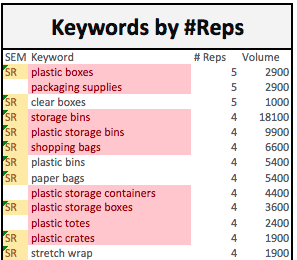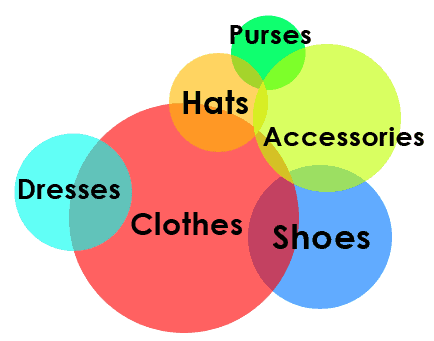If you have competitors, (which 99% of you do) keyword research does not have to be a shot in the dark. Competitive research can be a great starting point for those with a new client, for those looking to stay current, or for those looking to branch into a new market.
Using Data to Paint a Portrait of Your Industry & Customers
By comparing keyword usage across a handful of your competitors, you are able to grasp not only areas you are excelling in, but also areas where you are lacking or have mis-targeted your audience. Keyword research is a tricky business, as you most likely are not an expert in the area your client focuses on, yet you are tasked to find the jargon used by it’s customers. Sometimes what you may think is the term that makes the most sense, is not the term the customers use.
Watching the guys here chat about keywords for a popular clothing store and asking things like “What the heck is a bandeau bra?” or “Floral blazer? That sounds weird…” is, without question, hilarious, but also shows a great need for tools to gain a deeper understanding of the industries we’re optimizing for. With the inexorable amount of data available, there is no need to start every campaign from scratch.
After looking at what seemed like endless data from our clients’ and competitors’ websites, we decided a good way to determine the “hottest” words for that market was to see how many of our main competitors were ranking for each keyword.
To explain the image above: The yellow “SR” shows us which keywords our client is showing up for on the first two pages of Google. The red highlighted terms represent keywords which we are currently tracking and optimizing for. The # of reps column shows how many competitors (out of the 5 we entered) showed up in the first two pages of search results for that term. Finally, “volume” of course shows the average number of searches using that keyword each month in Google.
By seeing such a compilation of all of the keywords which bring up your client’s and your competitors’ sites, you are able to deduce some of the most popular keywords and jargon in your industry.
(Note: SEMrush has also developed a competitive analysis tool which we use.)Maybe the company you’re working for is determined to refer to cars as “autos” as they feel it is more in line with their “classical feel” branding. However, after running a comparative analysis across your main competitors in the car industry, you will find that only you are referring to cars as “autos” and the rest of your competition is using “cars,” as it’s the jargon most used by the customers. This understanding of the industry can make or break your presence in the SERPs.
Insight Into Areas of the Market You Want to Pursue
Another cool thing about looking at competitors’ data is the ability to take a look at competitors who are in markets you or your client wish to venture in to. Let’s say your client sells clothes, but wants to venture into each of the other markets shown in the image. Using the example above, the keywords for the clothing market may overlap a bit with the keywords for the shoes, accessories, dresses, etc., but for the most part, the core keywords for each of these industries are very different. Rather than start from scratch when optimizing for new markets, take a look at the data from other successful companies in these markets, and use their keyword success as a starting point for yourself!
Find the Missing Pieces of the Puzzle (Or Pieces You Didn’t Even Know Existed!)
When comparing your site to an array of your competitors, you can easily see what areas of the market you are hitting, and where you are missing out. Recently I compared one of our clients’ sites with its main competitors only to find that we were not tracking or targeting some highly relevant keywords. The example below is not our client, but shows essentially what happened:
Here, we would probably recommend this sample client to track and optimize for terms like “clear boxes,” “plastic bins,” “paper bags,” etc. as they are ranking for these keywords (as stated by the SR tag) but currently not intentionally optimizing for them (as shown by the lack of red highlight).
Once we saw all the high volume keywords that we were already managing to get some traffic for, we jumped on the chance to track and optimize for them.
NOTE: This is Not the Be All and End All
Something important to note at the end of all of this is that comparing your website’s keywords to that of your competitors and getting a great list of the most commonly used keywords in your industry is not the answer to your keyword research toils. I would not recommend verbatim integrating the highest used keywords in your industry onto your site without doing some footwork first. The fact is, you or your clients are not selling exactly what the competitors are selling, even though the product may be similar. The company you’re optimizing for has a brand, a voice and a place on the web of it’s own – something that makes it different from the rest, and it’s important to remember that simple fact when taking advantage of competitive research. This is only meant to be a starting point, or a check-in point, not an end-point.
And, of course, competitive research is not a one-time-deal. As with everything in SEO, it’s essential to routinely do checkups on the keywords used on your site as well as your competitors. Over 100 billion unique searches are typed into google a month, and you should be aware if/when the jargon in your industry changes and to account for that on the site you’re optimizing.
All that being said, try to take advantage of competitive research when you can. You may be shocked to find areas of the market you didn’t even realize you were missing out on.


